The Eastern Whio Link is a conservation project with a difference. Based in the Upper Waioeka between Gisborne and Ōpōtiki, this project is dedicated to restoring a healthy whio (blue duck) population to the Waioeka waterways.
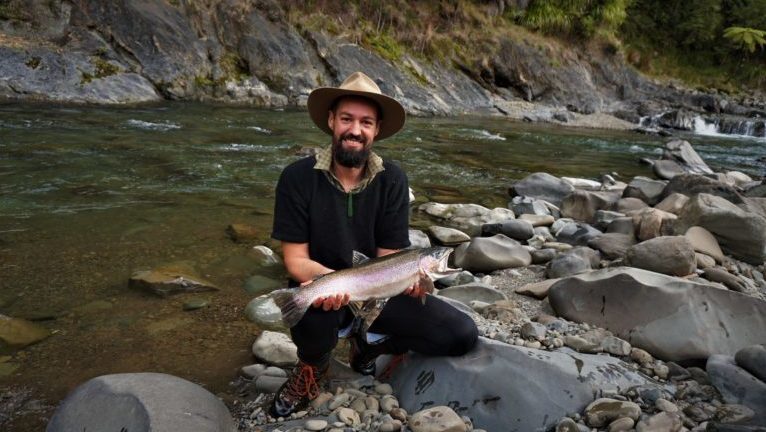
We’re going to be chatting with Sam Gibson from The Eastern Whio Link. Sam is an active hunter and fisherman who coordinates this project. He’s a dedicated trapper, educator and likes to catch some surf on the weekends. Thank you for speaking with us today Sam.
Firstly, Eastern Whio Link is a hunting, fishing and farming-led conservation project. What does that mean and how does living off the land in this way inform the mahi that you do?
With Eastern Whio Link we are really clear that Mahinga Kai practices (hunting, fishing and foraging) strengthens our ecosystem knowledge and our love for our wild places.
Through harvesting pikopiko (fern shoots from several palatable species) for example, we can gauge how high our deer population is.
Deer find pikopiko delicious and we can soon tell if there are too many deer in the area by our inability to forage a feed of pikopiko. This then informs our management approach around deer.
The same goes for kahikatea and kohia. If there are high rat numbers in a kahikatea fruiting season then there won’t be many fruit on the ground and again with kohia the fruit will all be gnawed out with little rat tooth marks in them. This is a tool to monitor rat abundance in a way that’s hugely meaningful to us as hunters, fishermen and farmers. These are the snacks we eat when we are on the hill and when they aren’t available it’s very noticable and motivating to do something about the problem.
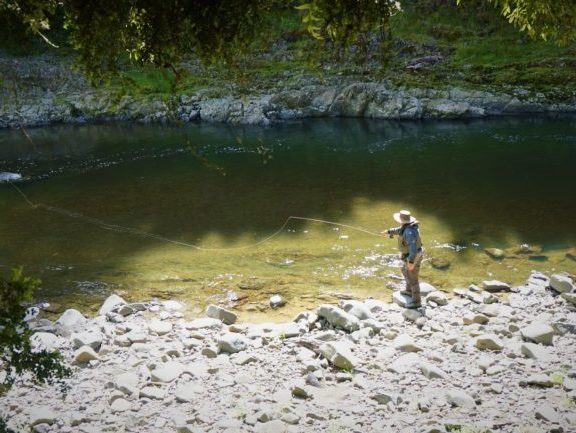
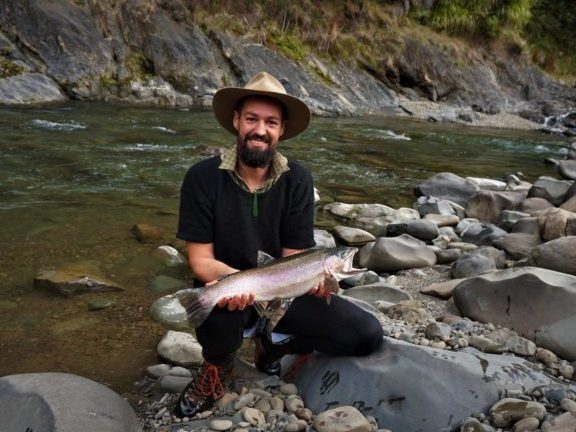
Likewise for trout. They are excellent indicators of whio habitat, as both trout and whio need clean water and an abundance of insect larvae for food. In this way our fishermen inform our management decisions. They know what stretches of river trout inhabit and are in good condition. We are then able to know what our available whio habitat is and put protection around it.
When we understand our ecosystems and have a connection to them through food we have a strong drive to care for those ecosystems that sustain us. This is the way it has been for generations and we are excited to see a social shift away from a hands off approach to once again encouraging our people into the landscape and accepting that the issue of conservation is much bigger than sitting back and managing our environment from an office on the sidelines.
Some people wouldn’t think that hunting and conservation could work hand-in-hand. Why do you think they work so well together?
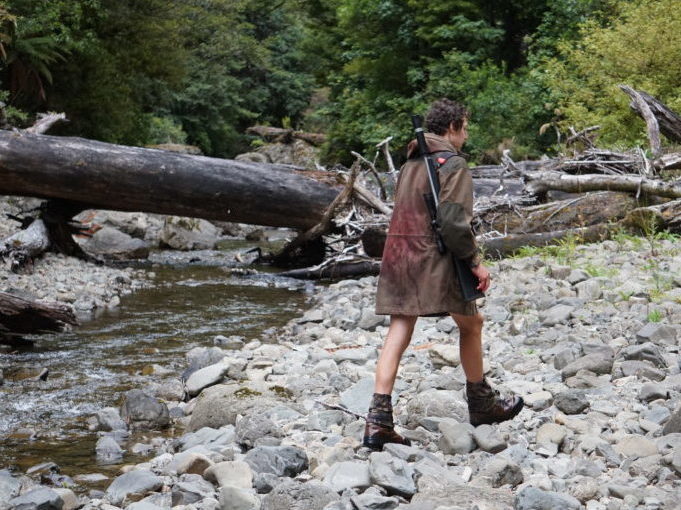
This is an understandable yet common misconception and something I believe stems from the publicity around the 1080 debate.
There are few other user groups that spend as much time in the bush, off-track and entrenched in nature as hunters. The fact that hunters rely so heavily on reading the ecosystems around them to hunt means they have a really strong knowledge of ecosystem relationships and services as well as seasonal changes and variabilities.
In a way, this gives hunters an excellent skill set to be conservationists. They are fit, have the ability to get around off track and have a huge amount of ecosystem knowledge.
If we look around at who our conservation leaders are in this country, we can see that an overwhelming percentage of conservationists are also hunters. Your local DOC office is packed with hunters in green uniforms.
I believe this is because as individuals spending time in nature it’s pretty difficult not to start to care about it. When your food comes from the bush, you want to look after the ecosystem it comes from, to give back.
In a way hunters have been leading conservation in NZ for generations. Hunting is just part of living in the backcountry. Conservationists usually are part trapper, part plant nerd, bird nerd, insect nerd, fisher, carpenter, hunter, photographer etc. etc. we have been raised to do it all.
How can hunters, fishers and farmers new to conservation get involved?
There are some excellent projects popping up around the country; many are led by local organisations such as The Sika Foundation, Eastern Whio Link, NZ Landcare Trust or Beef and Lamb NZ. If you want to join an established project, just reach out to one of those organisations or myself. We would be happy to point you in the right direction.
If you’re keen to establish your own project, looking after the area you hunt, fish or farm just sing out. There’s a large unofficial network of people that will be more than happy to give you a helping hand getting established.
Whio are very rare with only around 640 pairs in the North Island. The closest that most New Zealanders will get to these special ducks is seeing them on our 10 dollar note. What are they like and why are they worth protecting?
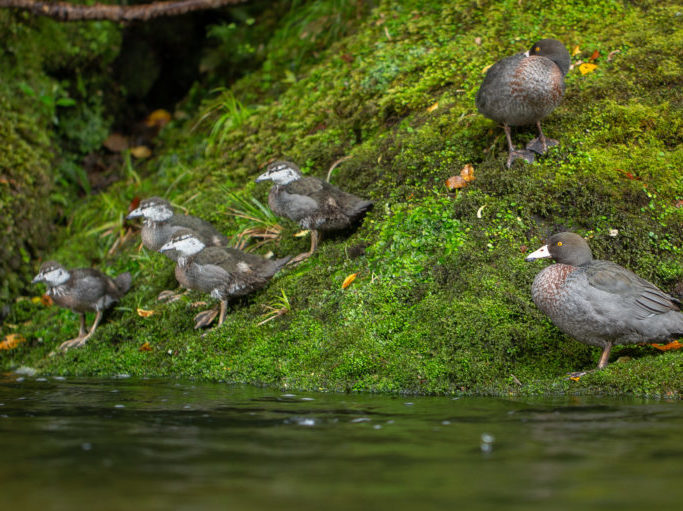
Whio are hugely comical, just bursting with personality. They seem to do a lot of things just for fun like rafting rapids. The juvenile mobs have a habit of playing ‘follow the leader’ and imitating each other’s actions. One will jump on a rock then the next three will take turns booting each other off into the water and having their own turn on the rock. They are massively social.
They pair up really young and while human couples have domestics and can split up, usually whio are super loyal and pair for life. Whio also have an aggressive side and they have no issue scraping each other over territories. When monitoring whio in Fiordland, we would sometimes find big gashes in the male duck’s toe webbing where he had been scrapping.
As hunters, fishermen and farmers we just love seeing them in our backcountry rivers and farm creeks. Being one of only four species of torrent duck in the world, and being pretty scarce in NZ, that makes them even more special.
Whio are one of those great species that, with just a little bit of quality predator control, can bounce back really fast. We often encourage groups to start with whio and then continue their work to protect other species, such as kiwi, that are slower to respond and more difficult to monitor.
Whio have a rubber-lipped beak and we often find them fossicking between the cobbles in the river bed searching for tasty insect larvae.
What is the most rewarding part of being involved in this conservation project?
Seeing the social change is huge. To see the community come together around a project like this is massive. We have over 80 active volunteers with people travelling from as far away as Auckland and the South Island to be involved in the project. We have local farmers, hunters and fishermen as well as Manawhenua from our local marae.
Companies send us coffee, food, donate helicopter time, clothing and boots to support our volunteers and they all pitch in to purchase the traps and consumables needed to keep the project running.
We have seen many of our hunters and farmers put their dogs through kiwi aversion training. This is an initiative we have taken on with the support of NZ Landcare Trust and we are seeing some really great shifts in people’s mentalities towards hunters and farmers.
What is the toughest issue that The Eastern Whio link faces?
Ongoing funding, hands down. As we grow our overheads increase. We are really lucky to have a great network of companies supporting us and as we grow we are bringing on more funding. Eastern Whio Link has one great project established with almost all whio habitat protected across a 25,000ha catchment, however, the vision is greater than that. We are just about to start our second project site in the Raukumara and we will need a whole new set of funders to adopt that site.
In short, these projects are seed populations for the wider region. Through establishing them we are allowing whio and hopefully kiwi to breed and disperse throughout the region. We have hunters, fishermen and farmers who care about these rivers. They just need the financial support to buy the traps, gas and lure.
Recently, The Eastern Whio Link has teamed up with River of Man Adventures and NZ Landcare Trust to offer Kiwi Avoidance Training for hunting dogs in the Gisborne Region. What does the training involve?
River of Man Adventures are another hunter-led whio conservation project in our region and we team up a lot to support each other’s work. NZ Landcare Trust was happy to support our farmers to protect their on-farm biodiversity so we all got together and created this training series.
In short, as hunters and farmers, we are a little bit nervous putting a shock collar on our dogs and handing someone else the remote, so that’s why we engaged Willie Marsh. Willie is a hunting guru from Te Urewera and an absolute dog whisperer. He has a gentle approach to dog training and reads individual dogs really well.
An owner will turn up to our training, take their dog out of the truck and Willie will show the owner how to put on the collar.
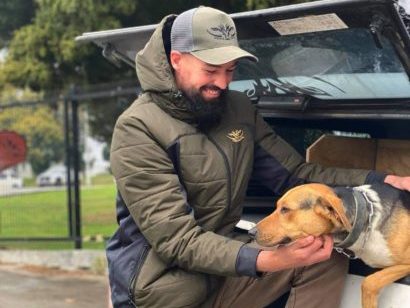
We then let the dog inspect the props on the course freely. The props are dead kiwi, kiwi feathers and kiwi decoys that move. We try to make it as realistic as possible. When the dog investigates the prop, Willie gives it a little vibrate on the lowest setting.
Most dogs are bred to please us as humans and they will run back to heel behind the owner. Other dogs might need a little encouragement with a really soft shock, but the overwhelming majority will just walk through the course twice, avoiding the props after the first vibrate.
At that point Willie signs off a dog as safe and will allocate a time of between one and three years for a refresher, depending on how the dog responded to the training.
As dog owners, it’s great peace of mind that your dogs are safe around kiwi and we hope to be able to extend the training to weka and whio in the coming years.
Kiwi Avoidance Training is a great way to protect our kiwi. How can people that are interested in getting their dogs trained find out more information about it?
Get in touch with Kiwi’s for Kiwi on social media or your local DOC office. Otherwise, if you’re on the East Coast get in touch with us and we can book you into one of our sessions.
What benefits have you seen from people getting involved in local conservation projects like Eastern Whio link?
We are seeing a huge shift in the ecosystem literacy of the general public. People are engaged in the outdoors and discovering species and interrelationships they didn’t know about. People are finding edible foods that they didn’t know existed and want to protect the ecosystems they came from.
Everyone needs a bit of the outdoors in their week. They reckon healthy land, healthy people and that’s definitely true when it comes to community-level conservation.
Finally, how can people support The Eastern Whio link?
Everyone has the ability to help. It costs $30 a year to service a trap, $150 to buy one. Some people have businesses that might want to adopt a trap line. Other people might have a free weekend and want to check some traps or check in on a pair of Whio.
Everyone can help, even if it’s just following us on Instagram or Facebook and letting your friends know about us.
But the biggest support would be to do all three. Share our story, come and volunteer on the project and if you can, support us with traps and lures to look after your wild places.
If you want to, follow The Eastern Whio Link and keep up with their great work. You can find them on Facebook and Instagram @EasternWhioLink.

